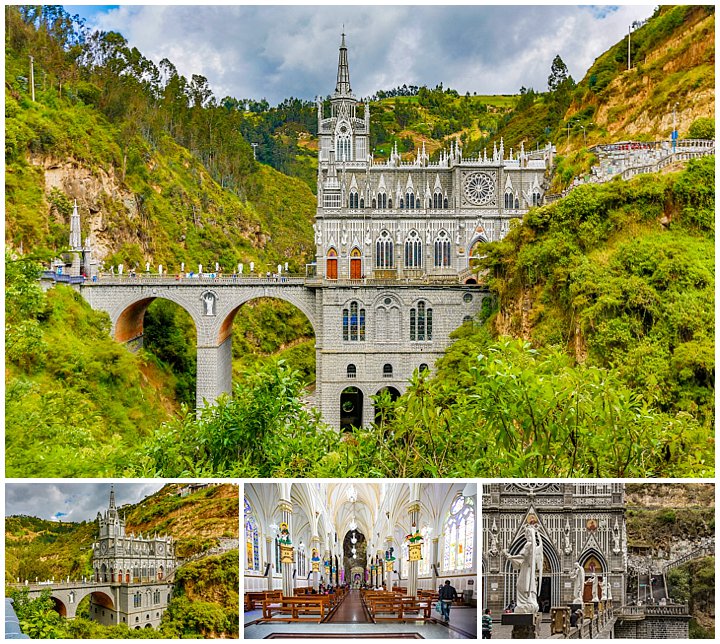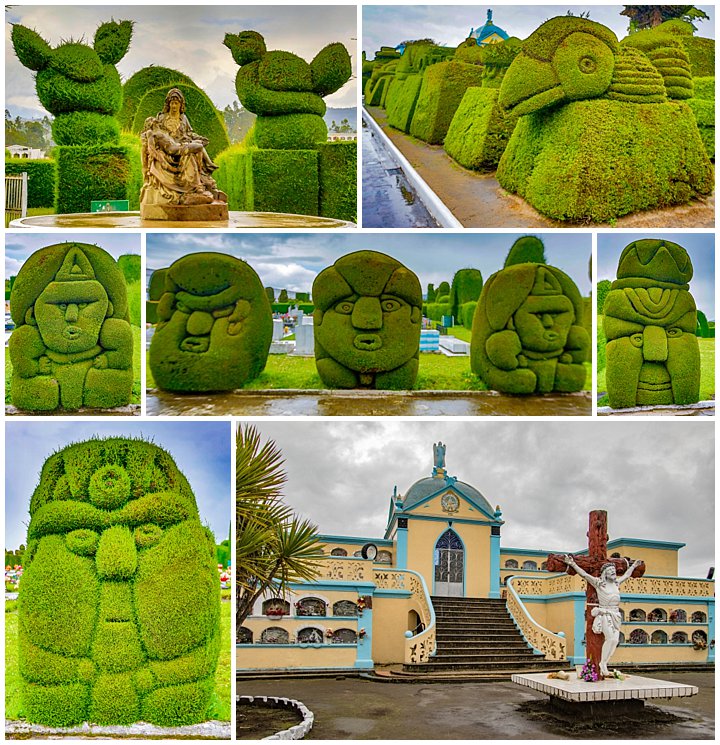
After our anniversary celebration, we drove to Tulcán, the highest city in Ecuador at 2,980m. There are two famous tourist sites in this area, though one is actually about 10 km across the border into Colombia.
To get to the iconic Las Lajas Sanctuary (a Catholic church and pilgrimage site, as shown above), we took a taxi to the border for $3.50, passed through both Ecuadorian exit immigration and Colombian entry immigration, then took another $8 taxi ride to the church. This was one time when it was very beneficial to be labeled as a persona de tercera edad (Spanish for “third age” — in other words, old…). If you are 65 or older, there is a special line at immigration. The regular line at both the Ecuadorian and Colombian side were about two-to-three hours long, but our tercera edad line took only 15 minutes… ☺
When the taxi dropped us off at the church, I was confused… There was no church to be seen? The photos I had seen of it made it appear to be something that could not be missed, so where was it?? The taxi driver pointed down a steep path…
We walked about three blocks down a steep street lined with paving stones, where no cars were allowed. As we turned a corner near the bottom, there was the picturesque church, spanning the ravine, out of sight of anyone more than 100 yards away. Seemed a rather strange place to put a church — where nobody could see it unless they were almost on top of it?
We spent about an hour walking around, having lunch, and photographing it from the available angles. There was a service going on in the church, so we could not really wander the interior spaces. We then walked back up the steep hill, hailed a taxi to the border, went through both immigration border crossings again, and took a taxi to the cemetery in the town of Tulcán. One hitch in that little reverse direction process was that the Ecuadorian immigration woman handling the special services line (tercera edad) told us (in Spanish) that she had signed us out just a few hours earlier, and was not allowed to therefore sign us back in. She directed us to go to the front of the normal line and use another agent. We got some dirty stares from the young people who had already been waiting more than two hours in that line…

The tourist claim-to-fame for Tulcán is known as the Cementerio Municipal de Tulcán (“José María Azael Franco Guerrero”) and entry is free. It is one of the more beautiful cemeteries in South America, with cypresses sculpted into hedges to form works of art of people and animals. In 1936, the caretaker decided to sculpt some rows of bushes into various shapes, called topiaries. Over the years, he continued and expanded his work until there were more than 100 such creations. That caretaker died in 1985, but his five sons now continue caring for the grounds. This elaborate topiary garden was declared as a national patrimonial cultural heritage site in 1984.
The number of topiaries on display is truly an amazing sight, as well as meditative and calming. I found it a little surprising that there were several rows that appeared to not have had any attention for several weeks though (below-left shows the “beard” of an untrimmed hedge). I am not sure if the grounds are just so big that even five men cannot keep it up, or if they have taken some time off.
